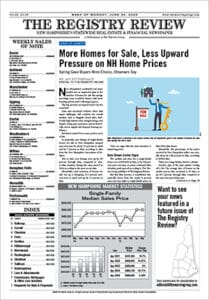
A viable real-time payments system is considered an important asset for community banks looking to secure more business customers, who frequently must make payments to other firms with accounts outside their own bank.
The Federal Reserve’s new real-time payments system will operate seven days a week, including holidays, but likely won’t be available until at least 2023.
FedNow, an end-to-end instant payment service, will provide banks with the infrastructure to let individuals and businesses make real-time payments. After releasing a proposal last year and accepting public comments, the Federal Reserve on Thursday provided details of the new service.
The Fed last year had targeted a launch date of 2023 or 2024, and that target has not changed. A more specific time frame will be announced after additional work is completed, the Fed said in a statement. The system is facing competition from The Clearing House’s own real-time payments system, which launched last year.
FedNow and private sector services will “modernize the U.S. payment system and bring the benefits of instant payments broadly to communities across the country,” the Fed said in a statement.
“The rapid expenditure of COVID emergency relief payments highlighted the critical importance of having a resilient instant payments infrastructure with nationwide reach, especially for households and small businesses with cash flow constraints,” Federal Reserve Board Governor Lael Brainard said.
Individuals and businesses will be able to use FedNow at participating U.S. banks to send payments any time of day through online or mobile banking services. The FedNow Service will support different types of payments, as well as information related to the payment, including invoices.
The Fed intends to set a transaction limit but has not yet decided on the amount, according to the Federal Register notice providing details about the new service. After the Fed originally proposed a $25,000 limit last year, several banks, trade organizations and other commenters provided feedback suggesting a higher limit or one in line with market conditions at the time of launch. A higher limit was suggested in part to support larger business-to-business payments. Banks will have the option to set lower limits.
Banks will also have access to intraday credit to support payment activity. A liquidity management tool, which the Fed said would be used for both FedNow and private sector services, would let banks transfer funds to one another to support liquidity needs.
Other features include seven-day accounting requirements for banks, daily reporting and fraud prevention tools. The initial launch of FedNow will include baseline functions, and additional features will be added in subsequent releases. Possible future features include more fraud prevention tools, alias-based payments, error resolution, case-management tools and bulk payments.
“The Federal Reserve also recognizes that market needs and technology related to instant payments are constantly evolving and intends to continue engaging with stakeholders and remain flexible in its approach when building out additional features and functionality of the FedNow Service,” the Fed said in the Federal Register notice.
With FedNow not set to arrive until 2023, it is unclear just how much market share The Clearing House’s Real Time Payments service, or RTP, will grab before then. The network has 28 participants representing over half of deposits in the country already. While mostly focused on large national banks like Wells Fargo, some community banks like Hudson, Massachusetts-based Avidia Bank have joined since its 2019 launch.
FedNow’s main selling point, payments analysts say, is its public ownership. Some have raised fears that RTP could concentrate too much power in the hands of large banks, many of which are part-owners of TCH. TCH has sought to dispel concerns that it would favor large banks over small ones.

